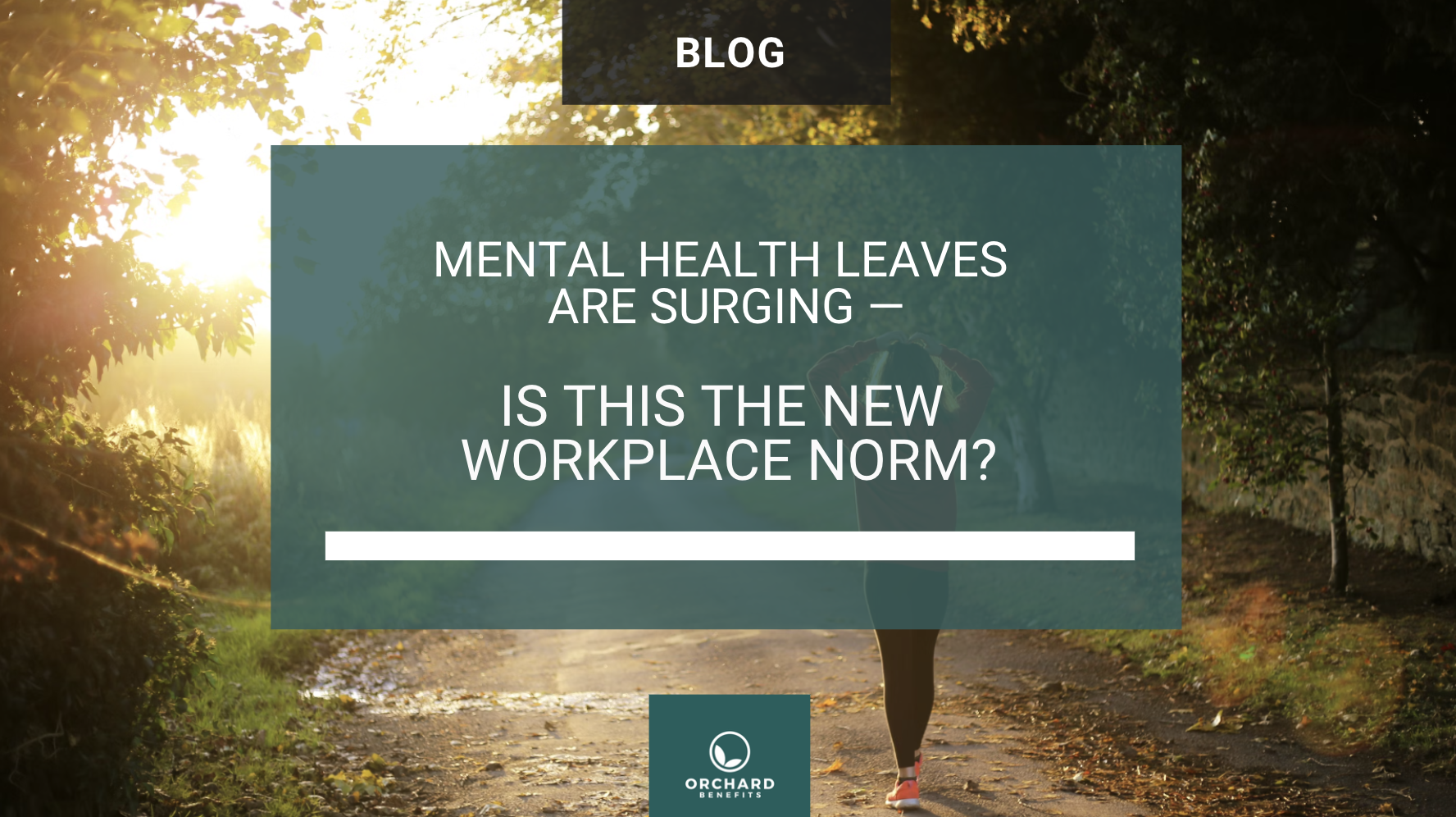A quiet revolution is underway in the workplace. Mental health leaves are no longer rare—they’re rapidly becoming a new norm. The question is, are employers ready?
The Pressure to Stay Connected —and What It’s Costing Employee Well-Being
According to a Headspace survey reported by Benefits Canada, 40% of employees have taken a mental health leave, and 51% of employers have noticed an increase in these types of absences. Yet, despite stepping away, many employees remain tethered to work—75% are still available during vacations, and 71% work beyond their expected hours.
This always-on culture undermines the purpose of mental health leave and contributes to emotional burnout, with 92% reporting sleep disturbances due to work. The path forward? Cultivating a culture of true disconnect, psychological safety, and meaningful support through initiatives like employee resource groups and mental health benefits.
Mental Illness Is Now The #1 Cause Of Disability In Canada
Between 2017 and 2023, mental health-related leaves of absence increased by 300%, according to ComPsych. In 2024 alone, we’ve seen a 22% rise. The shift is significant—and ongoing.
At the same time, data from Manulife paints a similar picture. Mental illness is now the #1 cause of disability in Canada, and every week, over 500,000 employees miss work due to mental health concerns. Since 2018, there’s been a 76.6% increase in LTD claims among Canadians aged 18–24, and a 42% increase in the 25–34 group.
Younger Workers Are Leading The Charge
This rise isn’t just about numbers—it’s about changing expectations.
Millennials and Gen Z are bringing mental health to the forefront. They’re asking for more than just coverage—they want emotional sustainability built into the culture. They’re normalizing mental health days and demanding flexibility that prioritizes psychological well-being.
In response, employers are realizing that ignoring mental health isn’t just bad for employees, it’s bad for business. They’re normalizing mental health days and demanding workplace cultures that support psychological well-being—not just coverage.
How Benefits Are Evolving To Meet The Moment
In light of these shifting norms, forward-thinking employers are expanding their benefit offerings. From virtual therapy and mental health coaching to personalized medicine programs that match employees with more effective treatments, the focus is clear: better support, faster intervention, and long-term wellness.
The Manulife Personalized Medicine program alone saw:
- 82% of users reporting improved mental health
- A 53% medication switch rate to more effective treatments
- A 6:1 ROI through improved productivity and reduced absenteeism.
As digital mental health tools gain traction, it’s important to recognize their limitations. While AI chatbots offer convenience and scalability, experts caution that they can’t replicate the empathy and trust of a human therapist. Effective care still hinges on real human connection. As employers expand their mental health offerings, balancing innovative tools with access to qualified professionals is key to delivering meaningful, lasting support.
It’s a clear signal that investing in mental health isn’t just the right thing to do—it’s a strategic advantage for organizations looking to build a healthier, more resilient workforce.
The Stigma Isn’t Gone Yet
Despite all the progress, 80% of employees say stigma around mental health still exists in the workplace. This often discourages people from taking the time off or support they need—until it’s unavoidable. And that delay can be costly—not just to individual well-being, but to organizations in the form of longer disability leaves and lower engagement.
What Comes Next? A More Human-Centred Workplace
As mental health leaves become more common, it’s time to ask: is your organization ready?
Creating a mentally healthy workplace goes beyond benefit plans. It means:
- Encouraging open conversations about mental health,
- Training leaders to recognize signs of burnout,
- Offering early intervention tools,
- Reducing red tape around time off and support.
A Turning Point for Workplace Culture
The rise in mental health leaves isn’t just a trend—it’s a signal. Employees are no longer willing to sacrifice well-being for performance. And employers who fail to adapt risk falling behind, not just in retention, but in resilience, productivity, and long-term success.
This moment calls for more than reactive policies. It calls for leadership that puts mental wellness on equal footing with physical health, and for benefit strategies that make space for both prevention and recovery. Because when mental health is embedded into the DNA of workplace culture—not just addressed during a crisis—organizations don’t just reduce absences. They build teams that are stronger, more loyal, and more human.


